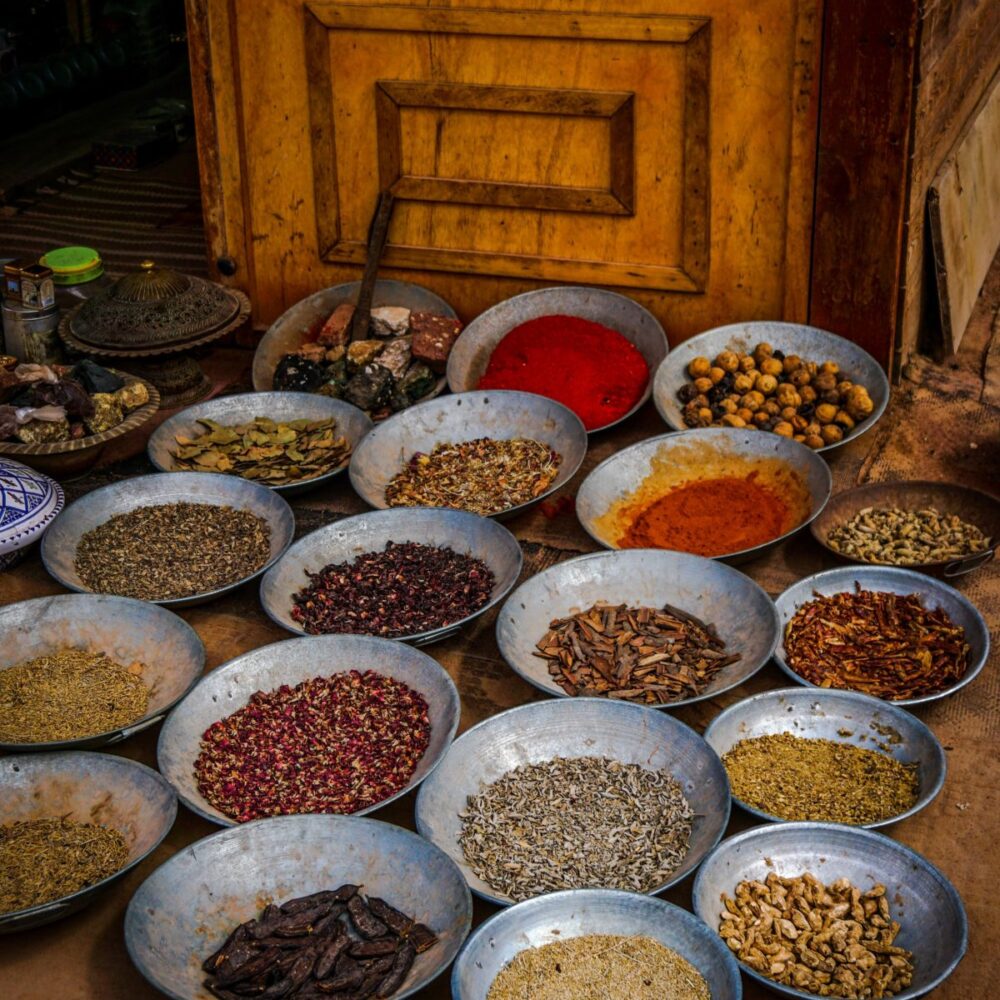
Both spices and herbs play a huge role in cooking and baking, and have for thousands of years. As long ago as 3500 BC the people of Egypt were using spices to flavor foods and wine, as medicine, in cosmetics and in the process of mummification. In 1550 BCE an Egyptian papyrus titled the Embers Papyrus describes 800 medical remedies using spices and herbs and again in the late 400’s BCE Hippocrates lists about 400, half of which are still used today.
Basically, spices are classified as coming from seeds, roots, bark or plants, while herbs are the fresh part of the plant. I think a perfect example that is familiar is Cilantro and Coriander. Cilantro are the green leaves and stems, while Coriander is the dried seeds. Many spice names that are familiar to today’s cook, like Curry, Garam Masala, Za’atar and Chili Powder are all blends of basic spices. Curry powder can have as many as 20 different spices combined in varying amounts to create a desired blend.
Spices and the spice trade originated in the Middle Eastern countries, and for centuries the overland trade and trade routes were controlled by the Arabs. However, the power of the maritime routes were controlled mainly by the Venetians from about the 9th Century AD until the fall of the Byzantine Empire (Eastern Roman Empire) to the Ottoman’s Conquest in 1453. Despite the ongoing conflict with the Ottoman Turks, Venice was able to hold on to its dominance as a maritime power for another 100 years.
In 1492-1498 sailing with four vessels, Vasco DaGama discovered a sea route around the southern tip of Africa (Cape of Good Hope)and reached the port of Kozhikode on the South West coast of India. He brought back to Portugal a ship load of nutmeg, cloves, cinnamon, ginger and peppercorns. This was the beginning of the Portuguese Empire, and was followed by the Spanish, Dutch and English dominance in the spice trade. The Portuguese however, entered into agreements with the Ottoman Turks and for awhile were dominate traders. Spices were at times more expensive than gold, and the conflicts between these countries at times grew into bloody battles. The competition and the battles lasted for the next 200 years.
The United States did not directly enter the spice trade until sometime in the 18th century. Prior to independence from England, the Colonies were not allowed to deal directly with the Middle East. After the Revolution and with the advances in shipping and navigation it was possible, thus making goods, much more affordable. The Americans traded rum, lumber, tobacco and sugar in exchange.
Today spices of all types are available at mostly reasonable prices all over the world. It has enabled us to flavor our food in ways not possible in earlier centuries. If you are fortunate enough to have a spice shop in your area, it is well worth your time to go in and talk with staff about different blends and their uses. On a recent trip to my local shop I left with 5 different curry blends. It’s amazing how they lend flavor and aroma to everything from chicken to fish, from savory tarts to breads, and all with unique differences. Explore and enjoy!